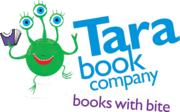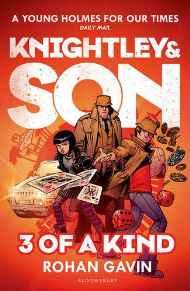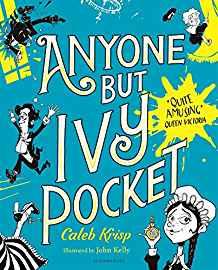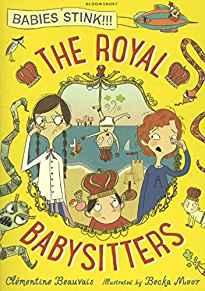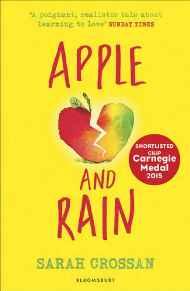Faoin Sceach Gheal (Under the Hawthorn Tree)
Author: Conlon-McKenna, Marita
Reading Age: 10 to 11 Fifth Class
Publisher: O'Brien Press
Illustrator: n/a
ISBN-13: 9780862786533
Number of pages: 176
Book Description
Scéal éachtach ar an Drochshaol, agus ar thriúr óga a sháraíonn gach guais lena linn.
I ndaichidí an naoú haois déag tá Éire I ngreim ag an ngorta. Nuair a... Read more
€8.99 Original price was: €8.99.€8.50Current price is: €8.50.
Only 1 left in store

Book Description
Scéal éachtach ar an Drochshaol, agus ar thriúr óga a sháraíonn gach guais lena linn.
I ndaichidí an naoú haois déag tá Éire I ngreim ag an ngorta. Nuair a imíonn mí-ádh ar a dteaghlach féin, fágtar Eibhlín, Micheál agus Peig le déanamh as dóibh féin. Le héalú ón ocras agus ó theach na mbocht, cuireann siad sa siúl. Is é a n-aon dóchas dul chomh fada leis na seanaintínú a mbíodh a máthair ag scéalaíocht orthu.
Tugann siad aghaidh go misniúil ar an aistear fada anróiteach, agus gnó acu ar feadh an achair dá bhfuil de shracadh agus de ghrá agus de dhílseacht ina gcroí.
The Great Irish Famine brilliantly recreated through the story of three young survivors.
Ireland in the 1840s is devastated by famine. When tragedy strikes their family Eily, Michael and Peggy are left to fend for themselves. Starving and in danger of ending up in the dreaded workhouse, they escape. Their one hope is to find the great-aunts they have heard about in their mother’s stories.
With tremendous courage they set out on a journey that will test every reserve of strength, love and loyalty they possess.
Review
‘this would be an ideal class novel to read together and enjoy as a group’ — seomraranga.com ‘the Irish translation adds to the pleasure of reading this classic Irish children’s novel’ — seomraranga.com ‘The Irish translation adds to the pleasure of reading this classic Irish children’s novel … This would be an ideal class novel to read together and enjoy as a group’ — seomraranga.com
About the Author
Born in Dublin in 1956 and brought up in Goatstown, Marita went to school at the Convent of the Sacred Heart, Mount Anville, later working in the family business, the bank, and a travel agency. In 1977 she married James McKenna and they have four children, Amanda, Laura, Fiona and James. They live in the Stillorgan area of Dublin.
Marita was always fascinated by the Famine period in Irish history and read everything available on the subject. When she heard a radio report of an unmarked children’s grave from the Famine period being found under a hawthorn tree, she decided to write her first book, Under the Hawthorn Tree.
Published in May 1990, the book was an immediate success and has been reprinted many times. It remained in the Irish Bestseller List for over two years. As well as being hugely popular in Ireland, Under The Hawthorn Tree also sold to Puffin in Britain and Holiday House in America; it has been translated into French, Dutch, German, Danish, Swedish, Italian, Japanese and Irish. The book has been read on ; Radio and is very popular in schools, both with teachers and pupils, and Marita is the most requested author for school readings. It has been made a supplementary curriculum reader in many schools and is also used by schools in Northern Ireland for EMU (Education through Mutual Understanding) projects.
Under the Hawthorn Tree has been filmed for ; and Channel 4, screened as a four-part series by Channel 4 in March 1999.
Marita went on to write several more books for children which were also very well received. The Blue Horse reached No. 1 on the Bestseller List and in 1993 won the BISTO BOOK OF THE YEAR Award. No Goodbye tells of the heartbreak of a young family when their mother leaves home. It was recommended by Book Trust in their guide for One Parent Families. Safe Harbour is the story of two English children evacuated from London during World War ll to live with their grandfather in Greystones, Co Wicklow. It was shortlisted for the BISTO Book of the Year Award, 1995. Marita’s first foray into the world of fantasy, In Deep Dark Wood, was a huge success. A strange new neighbour spirits Mia to a land of legend, and her brother Rory faces dragons and danger to rescue her in this story of wonder and magic.
Marita has won several awards, including the International Reading Association Award, the Osterreichischer Kinder und Jugendbuchpreis, the Reading Association of Ireland Award and the Bi
